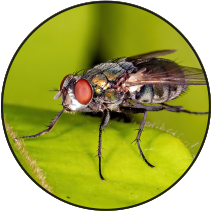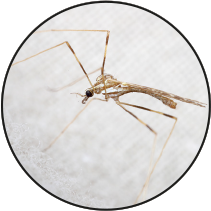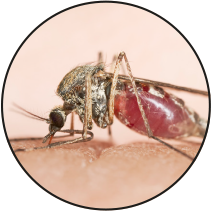ABOUT REPELLENTS
TYPES OF REPELLENCY
Using a product with repellent activity helps to prevent bites and discomfort as well as reducing the risk of disease transmission from ticks and flying insects.
Permethrin works in 2 ways:
- Contact-based repellency targets ticks - permethrin has an irritant effect which causes ticks to leave the treated dog after contact with its coat or skin, usually before they start feeding
- Olfaction-based repellency targets flying insects - vaporised molecules of permethrin are detected by the insects, causing them to avoid contact with the treated dog
Â
Â
FEARSOME FLYING INSECTS
Flying insects can bite both pets and humans, leading to discomfort as well as a risk of disease transmission.
Click on each of the images below to find out more about different types of flying insects.

Biting flies (stable flies) are found in the countryside and attack during the day, biting both dogs and humans. Their bites cause skin irritation, lesions and allergic reaction, and they are also vectors for many animal diseases.

Mosquitoes are very common and are the number one vector of infectious diseases to humans. The peak season for mosquitoes is April to September and they are most active at dusk and dawn.
While the bites themselves may not be painful, they can cause discomfort, irritation and hypersensitivity reactions.

